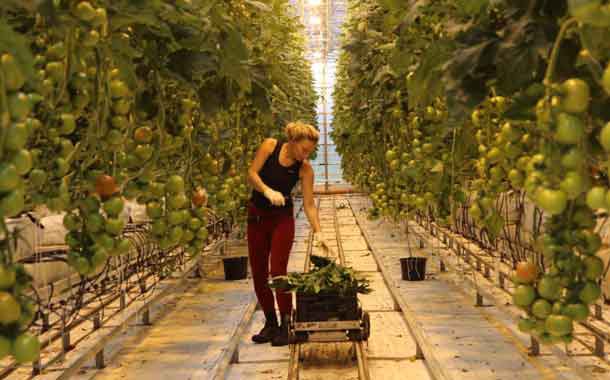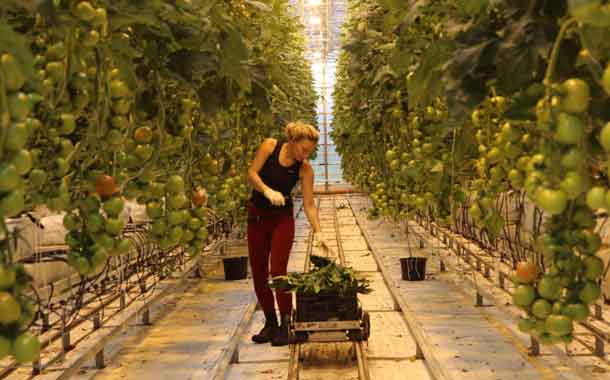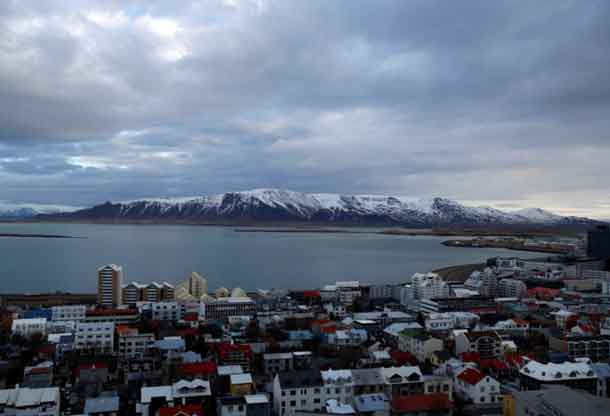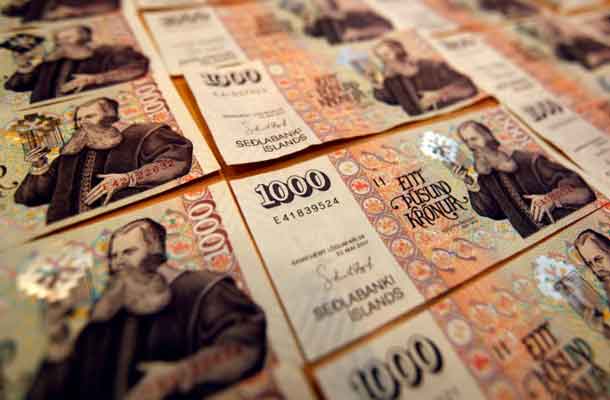
Geothermal energy, which makes up a quarter of Iceland’s electricity, has helped boost the year-round availability of fresh food
By Thin Lei Win
HUSAVIK, Iceland (Thomson Reuters Foundation) – For half the year, the temperature on Pall Olafsson’s remote farm in Iceland often dips below freezing and the sun barely makes an appearance.
Yet the heat and light in his greenhouses allow Olafsson to grow his juicy tomatoes and cucumbers even in the depths of winter – thanks largely to the geothermal energy that gives his tiny North Atlantic nation its title, the Land of Fire and Ice.
“When we started using the lights and growing all year round, then it changed a lot,” said Olafsson as workers busily pruned plants behind him.
“(Before), you were picking the last tomatoes in November and next you pick in April. Maybe 20 years ago, it was like that.”
Olafsson credits the hot springs that bubble up from the earth a short distance away with turning Hveravellir into one of Iceland’s biggest vegetable farms, producing about 500 tonnes of tomatoes, cucumber and paprika a year.
Iceland’s volcanic origins have blessed the island of 350,000 inhabitants with abundant geothermal energy – a renewable resource that, unlike solar or wind power, is unaffected by its unpredictable weather.
Geothermal energy makes up a quarter of Iceland’s electricity – all of which comes from renewable sources – and has helped boost the year-round availability of fresh food in the past two decades.
The naturally hot water is piped in to heat the greenhouses and the hot springs are also a key source power for the artificial lights that help farmers grow their crops even in winter, when the island sees barely three hours of sunlight.
Icelandic farmers began artificially lighting their greenhouses about 20 years ago.
But the real game-changer was the technology that allows them to control every detail remotely from a smartphone, said Knutur Rafn Armann, who runs the Fridheimer tomato farm with his wife Helena.
“We have a steering computer in every greenhouse connected to our weather station, connected to our model PC computer, which is connected to the internet,” he said.
“So whenever I go somewhere I always have my iPhone with me and I can water the plants, open windows, and change settings or steer everything through my phone.”

VOLCANO
The remote island historically imported much of its food.
But the double whammy of the 2008 financial crisis and a volcanic eruption that prevented planes from landing in 2010 have encouraged greater self-sufficiency.
Now, at least half the tomatoes and cucumbers sold here are locally grown, said Gunnlaugur Karlsson, managing director of Solufelag Gardyrkjumanna (SFG), which packages and markets fruit and vegetables.
He believes it is common sense for a remote, disaster-prone island to produce as much of its own food as possible – and besides, local produce sells.
This year SFG began working with farmers to take their food into kindergartens, ensuring the children eat produce that is locally grown and pesticide-free.
The industry is doing what it can to encourage people to buy local, but many believe the government could do more to help.
“The authorities do not care if the food is imported or locally grown, as long as it is not contaminated with harmful chemicals etc,” said Helgi Johannesson, a farming consultant.
A spokesman for Iceland’s Ministry of Industries and Innovation said the government was working on a policy to procurement local food for government institutions.
However, farmers say the government could achieve more by giving them preferential rates for electricity.
Currently, just 0.5 percent of Iceland’s total power goes to farmers, who say they have to pay a higher rate than the electricity-hungry aluminum industry.
The state-owned power provider Landsvirkjun does not disclose prices and the Icelandic government declined to comment.
“I often say to the government, if we decide to use 1 percent of electricity to make healthy, good food for ourselves, that would be great,” said tomato farmer Armann. “But of course (they) would have to lower the prices to the farmers.”
(Reporting By Thin Lei Win @thinink, Editing by Claire Cozens. Credit the Thomson Reuters Foundation)






